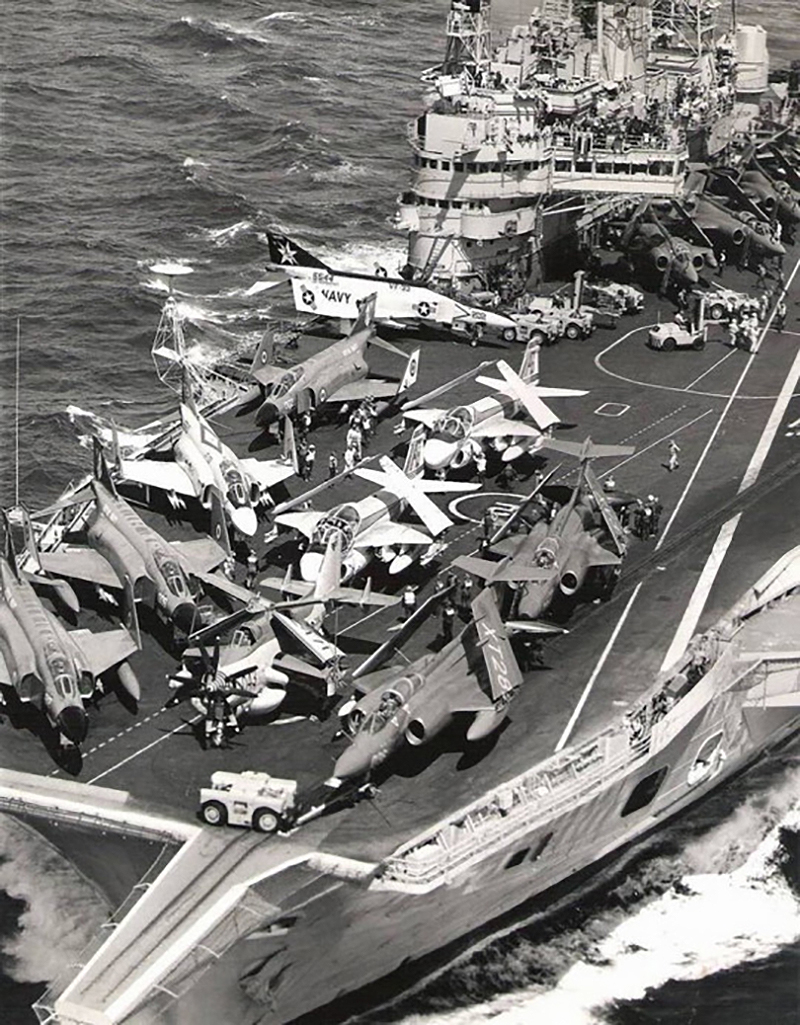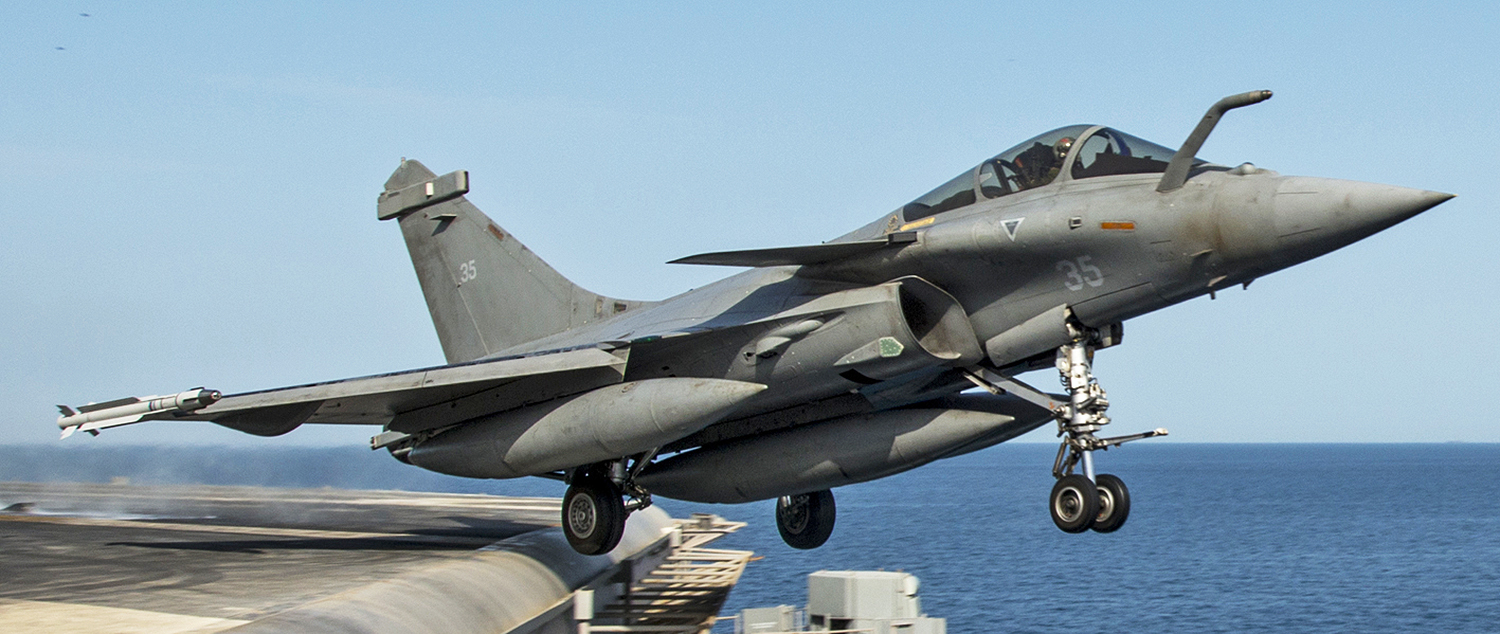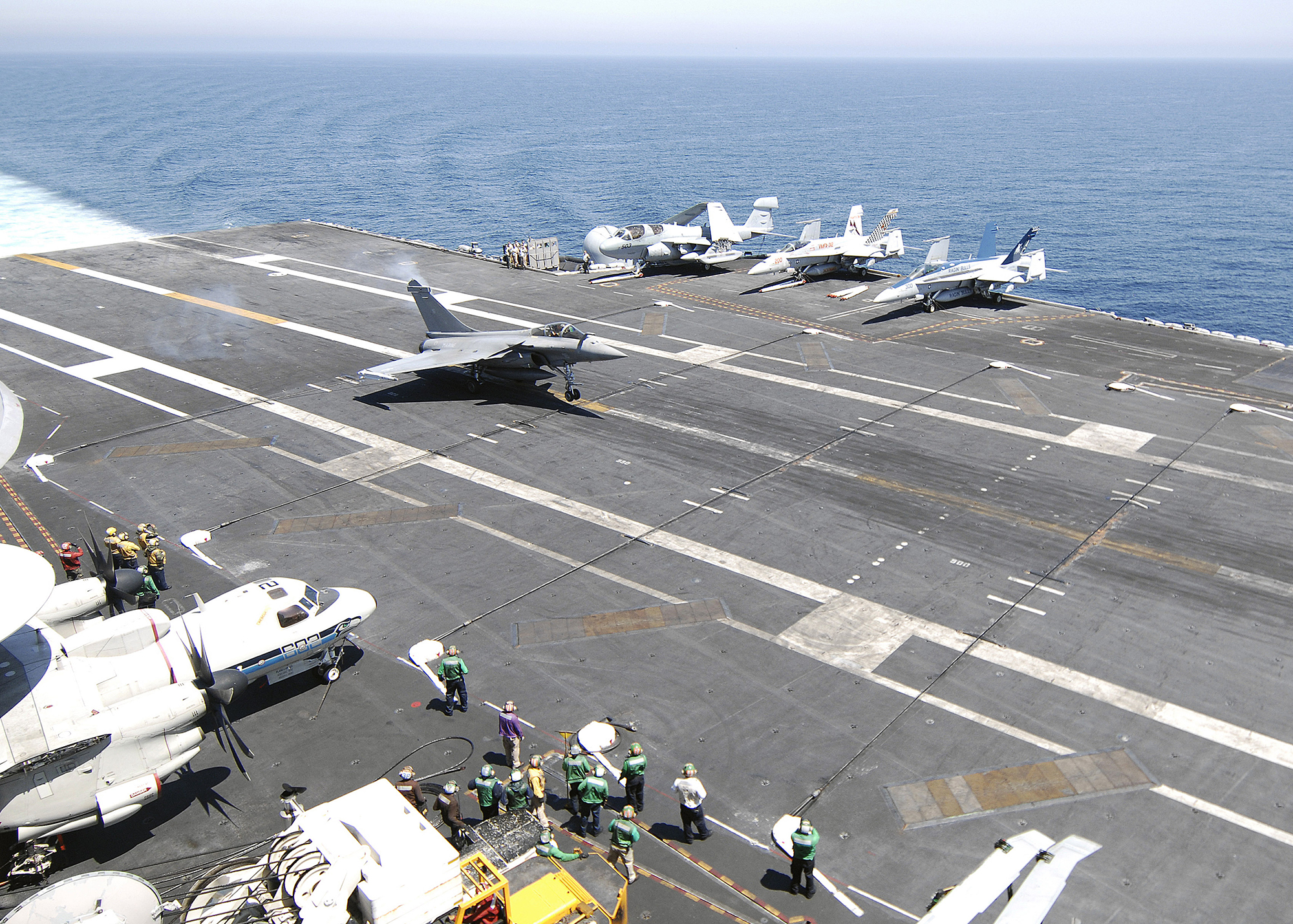A number of Marine Nationale Rafale-M multi-role fighter jets and E-2C Hawkeye airborne early warning and control aircraft, along with 350 support personnel and aircrew, will deploy aboard the USS George H.W. Bush this Spring. Not only will the multi-national operation work to give Rafale-M aircrews much needed carrier qualifications—France’s only carrier has been undergoing a mid-life refit—but it also aims to expand the two countries’ abilities to operate fighter aircraft cooperatively from the sea for prolonged periods of time.
Captain Jean-Emmanuel Roux de Luze, the French Naval Attaché to the U.S. Navy, recently told USNI News the following:
“We want to demonstrate our ability to integrate with U.S. military services… We want to show we do maintenance, demonstrate we can load weapons.”
Under the plan, French Rafale-Ms and E-2C Hawkeyes will fly to NAS Oceana in Virginia and train out of that location for a period of time. Then some of the aircraft, aircrews, and support personnel will fly out to the USS George H.W. Bush to operate as an integrated component of the carrier’s air wing.

The U.S. and French are in a very exclusive club, they are the only two countries in the entire world that maintain an operational catapult assisted take-off and barrier arrested recovery (CATOBAR) fixed-wing aircraft carrier capability. For a long period of time this wasn’t the case, with a handful of other countries around the globe fielding these types of ships. They are the most capable type of aircraft carriers given the aircraft that were able to fly off their decks.
Since the waning days of the Cold War this club has shrunken dramatically, leaving just France and the U.S. with such a capability. But that is about to change as India and China march toward a CATOBAR capability of their own.

Both French and U.S. carrier aircraft utilize very similar primary support infrastructure—namely very similar catapult and arresting gear systems, as well as similar navigational aids, allowing each other’s aircraft to “cross-deck” during cooperation training evolutions. Cross-decking can be as limited of an activity as executing touch and goes on one another’s aircraft carriers, or it can include conducting full-on launch and recovery operations, but it doesn’t usually include operating aboard a foreign carrier for a prolonged period of time.

Longer-term cross-decking used to be a more common occurrence decades ago. In particular, American carrier-borne Navy squadrons would occasionally spend time operating aboard Royal Navy CATOBAR configured carriers and vice-versa. This practice was largely curtailed once HMS Ark Royal, the last Royal Navy CATOBAR carrier, was retired in 1979.

But this practice looks to be on the verge of a renaissance of sorts, and not just because Rafales are deploying to the USS George H.W. Bush. The USMC F-35Bs will be among the first aircraft to deploy operationally aboard the HMS Queen Elizabeth. The Royal Navy even built a special USMC space within the ship in anticipation of near constant cooperative USMC-Royal Navy F-35B deployments. Considering that multiple other allied Naval arms are now interested in making their helicopter carriers F-35B capable, and procuring small lots of the jets themselves, this practice could become far more widespread.

It remains unclear if a future multi-national carrier cruise between the Marine Nationale and the U.S. Navy at the squadron level will ever occur, but after this exercise it may be far more plausible than any time in the past few decades. Even a small deployment of say six French Rafales-Ms and a Hawkeye could be integrated into an existing air wing for an upcoming operational cruise, and there is plenty of room on American supercarriers’ decks these days to accommodate a foreign aircraft contingent. During the Cold War, Nimitz class supercarriers would carry upwards of 90 aircraft, today they commonly deploy with around 65, and many of those aircraft derivatives of the Super Hornet.

The Rafale-M is no slouch when it comes to a modern air combat environment, it is a proven and highly capable tactical jet that can execute a wide variety of missions. Since the Super Etendard was retired, the Marine Nationale has focused all its energy on Rafale operations, making the force even more potent than it was before. With this in mind, bringing that capability, as well as the unique perspective of a foreign naval aviation force, aboard an American supercarrier for an entire cruise could be highly beneficial. Conversely, deploying Hornet or Super Hornets, and Hawkeye aircraft aboard the Charles De Gaulle once it comes out of refit could be equally if not more beneficial to the French.
Regardless of where this high-profile exercise in international naval aviation corporation leads, we are sure to be bombarded with some amazing photos and video from the George H.W. Bush this Spring, and we who can argue with that?

Contact the author: Tyler@thedrive.com
